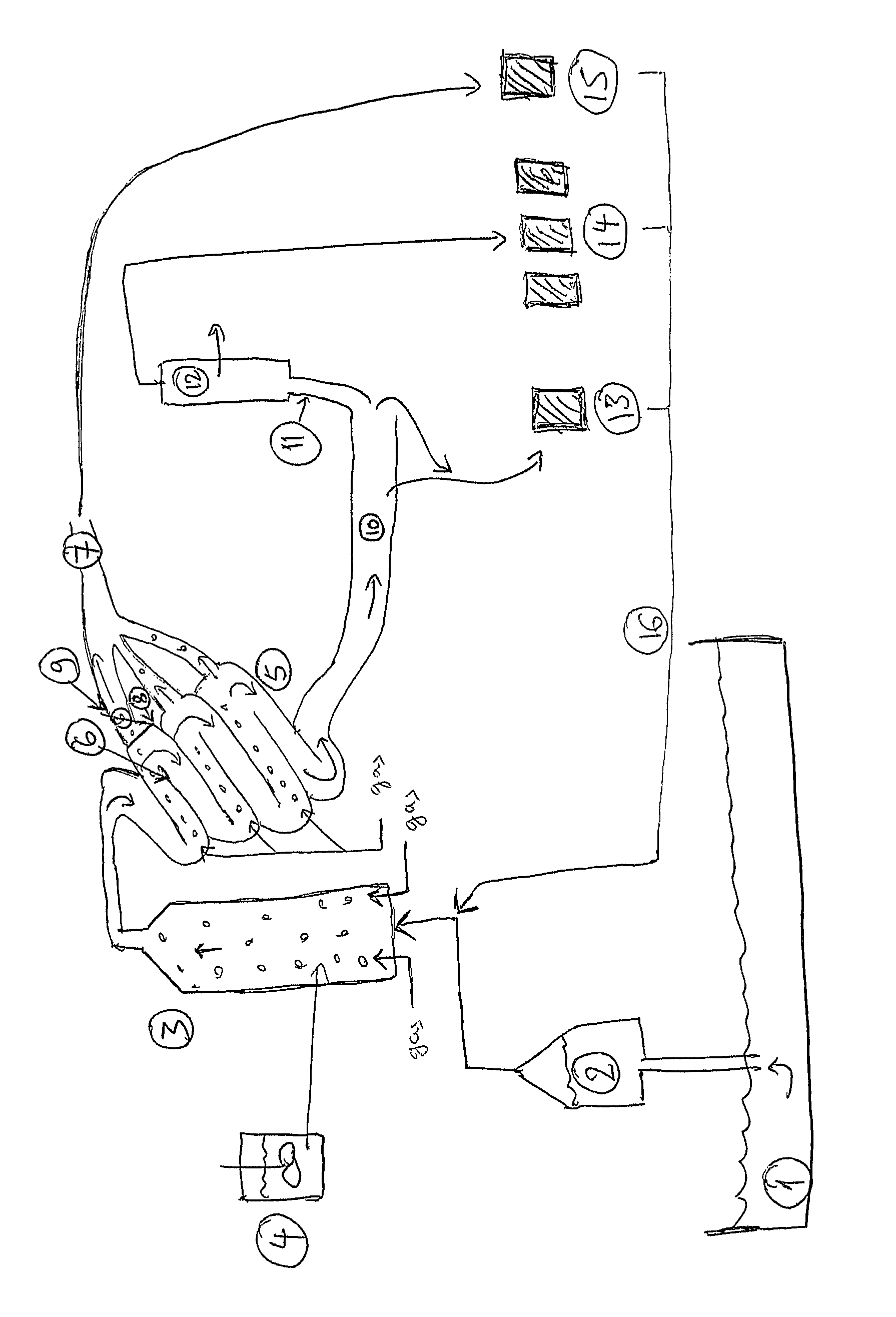Method of increasing the gas-liquid interface in a fermentation process
a technology of gas-liquid interface and fermentation process, which is applied in the direction of biochemistry equipment and processes, enzymology/microbiology equipment, biochemistry apparatus, etc., can solve the problems of increasing the cost of biotechnology
- Summary
- Abstract
- Description
- Claims
- Application Information
AI Technical Summary
Problems solved by technology
Method used
Image
Examples
Embodiment Construction
[0031]The method and equipment in accordance with this invention typically allow for the implementation of a biotechnological process ensuring that the process solution travels into a desired direction. Various types of tanks, containers and reactors may also be built for preliminary treatments and intermediate phases, in which the process solution remains for some time. However, as the process solution moves on, the desired gas or gas mixture, which may contain oxygen or be anaerobic, is simultaneously led into it. The movement of the process solution may be achieved for example through the action of a pump, and physical phenomena can be utilized in it, such as gravity, hydrostatic pressure, capillary action or diffusion. The movement of the process solution can also be affected by means of a conveyor, belt, wire or similar, causing the process solution to travel with it in a relatively thin layer, such as in a pulp and paper factory. The difference is, however, that the solution t...
PUM
| Property | Measurement | Unit |
|---|---|---|
| gravity | aaaaa | aaaaa |
| hydrostatic pressure | aaaaa | aaaaa |
| viscosity | aaaaa | aaaaa |
Abstract
Description
Claims
Application Information
 Login to View More
Login to View More - R&D
- Intellectual Property
- Life Sciences
- Materials
- Tech Scout
- Unparalleled Data Quality
- Higher Quality Content
- 60% Fewer Hallucinations
Browse by: Latest US Patents, China's latest patents, Technical Efficacy Thesaurus, Application Domain, Technology Topic, Popular Technical Reports.
© 2025 PatSnap. All rights reserved.Legal|Privacy policy|Modern Slavery Act Transparency Statement|Sitemap|About US| Contact US: help@patsnap.com


